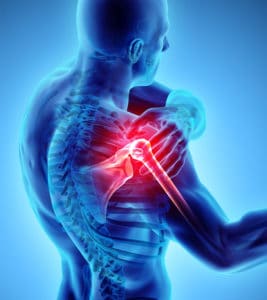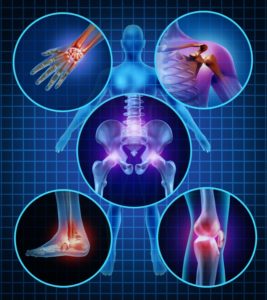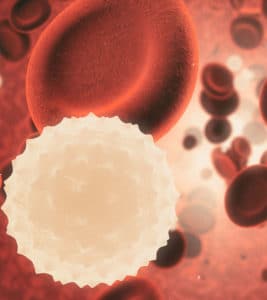Fracture Diagnosis And Care
A fracture is a break or crack in a bone that occurs when the bone cannot withstand the amount of force being placed on it. A fracture is usually the result of trauma, a fall or a direct blow to the body. The severity of a fracture usually depends on the force that caused the break. A bone may be completely fractured or partially fractured in several different ways. Treatment for fractures may include a splint, cast or surgery, depending on the severity and location of the break.
Types Of Fractures
Fractures vary based on the type of injury that was sustained, the way the bone was fractured and the location of the fracture. Fractures may be categorized by the type of injury, which may include:
- A transverse fracture is a straight line across the bone
- An oblique fracture is an angled line or break
- A spiral fracture is a fracture that encircles the bone
- A comminuted fracture occurs when the bone has broken into several pieces
- A displaced fracture occurs when the bone fragments on each side of the break are not aligned
An open or compound fracture occurs when bone fragments puncture the skin, possibly damaging surrounding muscles and tendons. This is often the most serious type of fracture because if the skin is broken, infection in both the wound and the bone can occur.
Symptoms Of Fractures
A fractured bone is usually painful and an individual may experience:
- Swelling
- Tenderness
- Physical deformity
- Difficulty moving
- Bruising
The injured limb is often difficult or impossible to move, and in severe cases the bone may have broken through the skin.
Diagnosis Of Fractures
A fracture is diagnosed after a physical examination as well as imaging tests that may include X-rays or CT scans. Imaging tests allow the physician to identify the exact location and type of fracture.
Treatment Of A Fracture
Initial treatment of a fracture may include managing pain and any swelling of the injured area. Treatment for most fractures focuses on repositioning the bone and preventing it from moving out of place until it has healed. Treatment may include:
- Pain medication
- Immobilization through a splint or cast
- Functional cast or brace which allows limited movement of nearby joints
A displaced fracture may require the broken bones to be realigned, prior to splinting or casting. Patients with severe fractures may be referred to an orthopedic specialist in a hospital setting for treatment. Severe or multiple fractures may require external fixation, which uses an outer metal rod and pins to hold the bone or bones in place until they heal. Internal fixation devices, including plates, rods or screws, may also be used to maintain proper position of the bone during healing.
Fractures may take several weeks to several months to heal, depending on the extent of the injury. During the healing phase, physical therapy is often recommended to restore normal muscle strength, range of motion, and flexibility.
Casting For Uncomplicated Fractures
A fracture is a break or crack in the bone that is often caused by extreme force or injury. Fractures are more common in children than adults because of their active lifestyle and pliable bones. Pediatric fractures often involve growth plates, areas of cartilage where the bones can grow.
While treatment for a fracture varies depending on the location and severity of the injury; many fractures can benefit from casting. A cast is a hardened bandage made of fiberglass or plaster that holds the bone in place so it may heal. Depending on the fracture and the age of the patient, the cast may be needed from four to ten weeks. Casts require care to keep the fractured area clean and dry, which helps promote effective healing with less risk of infection or complication.
Stress Fractures
A stress fracture is a very thin crack in a bone that can result from repetitive stress. Playing sports or performing other activities that put repeated pressure on bones are often causes of stress fractures. Although they can happen to anyone, stress fractures are more common in athletes such as runners, dancers, gymnasts, and basketball or tennis players. Stress fractures can also be caused by diseases that weaken bones.
Symptoms Of Stress Fractures
Stress fractures are most common in the weight-bearing bones of the lower leg and foot. Rarely, they occur in the forearm. At first, pain caused by a stress fracture may be barely noticeable, but it tends to worsen with time. There may also be swelling or bruising around the site of the injury. Definitive diagnosis of a stress fracture is made through diagnostic imaging tests such as X-rays, MRI scans and bone scans.
Risk Factors For Stress Fractures
Although athletes, especially track and field athletes, have increased susceptibility to stress fractures, they can occur in anyone, particularly those who take up a new sport or begin a period of extreme exercise. Military recruits, who are abruptly required to engage in prolonged periods of intense exercise, frequently suffer stress fractures. Other risk factors for stress fractures include the following:
- Abnormal or absent menstrual periods
- Flat feet or high arches
- Bones weakened by osteoporosis, bone cancer or other diseases
Bones can also become weak from long-term use of corticosteroids and other medications.
Treatment Of Stress Fractures
Treatment of a stress fracture depends on its location and severity, but usually consists of resting the affected bone, applying ice, reducing weight-bearing activity, and immobilizing the injured area with tape, a cast or a splint. For leg or foot stress fractures, patients often use canes or crutches during recovery. In some cases, surgery may be necessary to hold the bone in position (internal fixation).
Surgery is more common if the fracture is in a region in which blood circulation is poor, or if the patient has experienced more than one such fracture. When surgery is necessary, metal pins or screws may be needed to hold the bone in place as it heals. Physical rehabilitation is necessary after surgery, and patients should resume physical activity only gradually.
Casting For Uncomplicated Fractures
A fracture is a break or crack in the bone that is often caused by extreme force or injury. Fractures are more common in children than adults because of their active lifestyle and pliable bones. Pediatric fractures often involve growth plates, areas of cartilage where the bones can grow.
While treatment for a fracture varies depending on the location and severity of the injury; many fractures can benefit from casting. A cast is a hardened bandage made of fiberglass or plaster that holds the bone in place so it may heal. Depending on the fracture and the age of the patient, the cast may be needed from four to ten weeks. Casts require care to keep the fractured area clean and dry, which helps promote effective healing with less risk of infection or complication.













